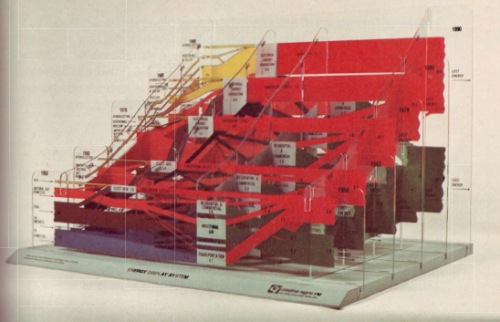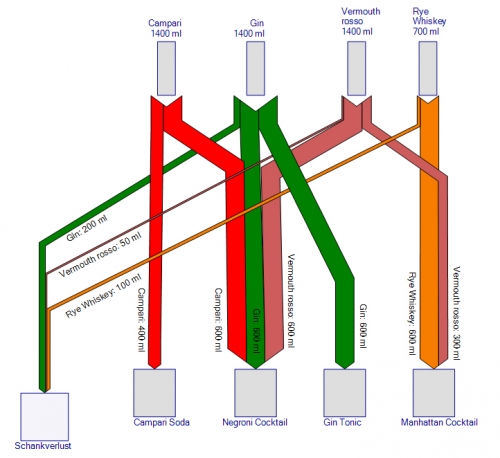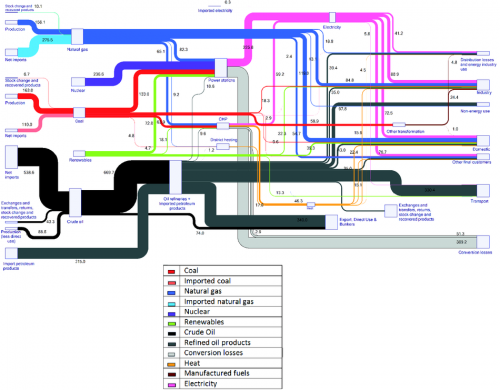The Energy Education References Wiki has a page on Sankey diagrams. It features many samples, snippets and links directed at teachers.
One image in particular caught my attention. This is described as “Energy Display System” created by CSIS in the 70s
(via Energy Education References Wiki)
You all know those national energy flow Sankey diagrams I show here regularly? Now imagine the same type of image as a series consecutive frames for several years. This would produce a kind of animated gif or movie showing changes over time.
The above must be an early 3D version of this. The diagrams are mounted on what seems to be acrylic glass…




